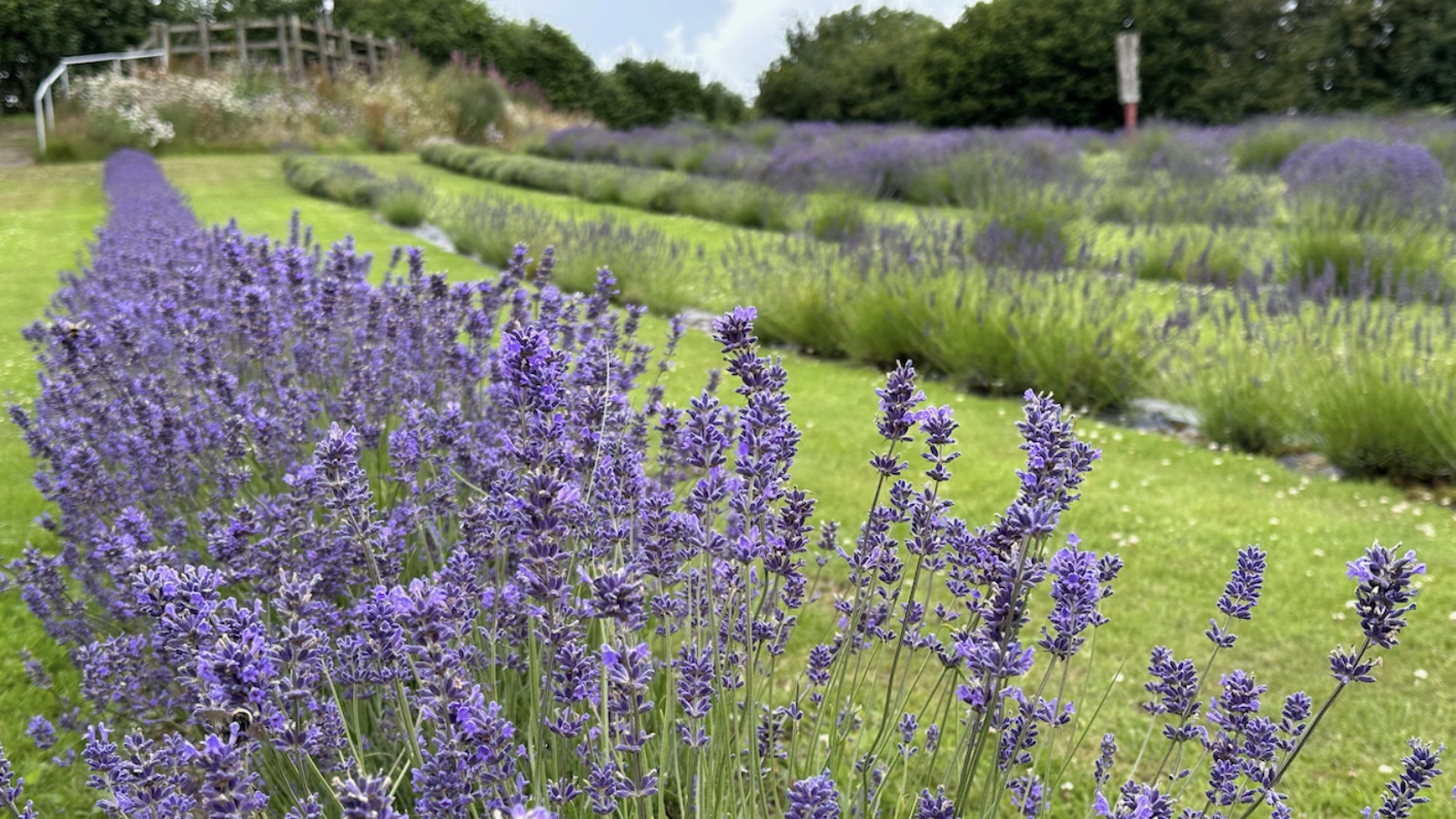Fragrant lavender is in full bloom in the summer months, and while large farms in places like Provence, Utah, Thailand, Australia, England and New Zealand showcase crops on hundreds or thousands of acres, there are many small farm owners that exist that have more than just a high yield harvest on their minds.
Smaller farms are also focused on regenerative farming practices and creating an intimate visitor experience, in some cases out of necessity, to stay viable and competitive in the lavender space.
The FARMERS’ Welsh Lavender farm located in the Bannau Brycheiniog mountainous region in Wales, formerly known as the Brecon Beacons, is representative of how many small farms are making big strides when it comes to horticulture experimentation and directly connecting its visitors to the land where lavender grows. These efforts matter in the big picture when it comes to sustaining the smaller crops, encouraging visitors to buy local versus buying flowers and products from outsourced producers and maintaining a viable business that relies on a three-month harvest and production window.
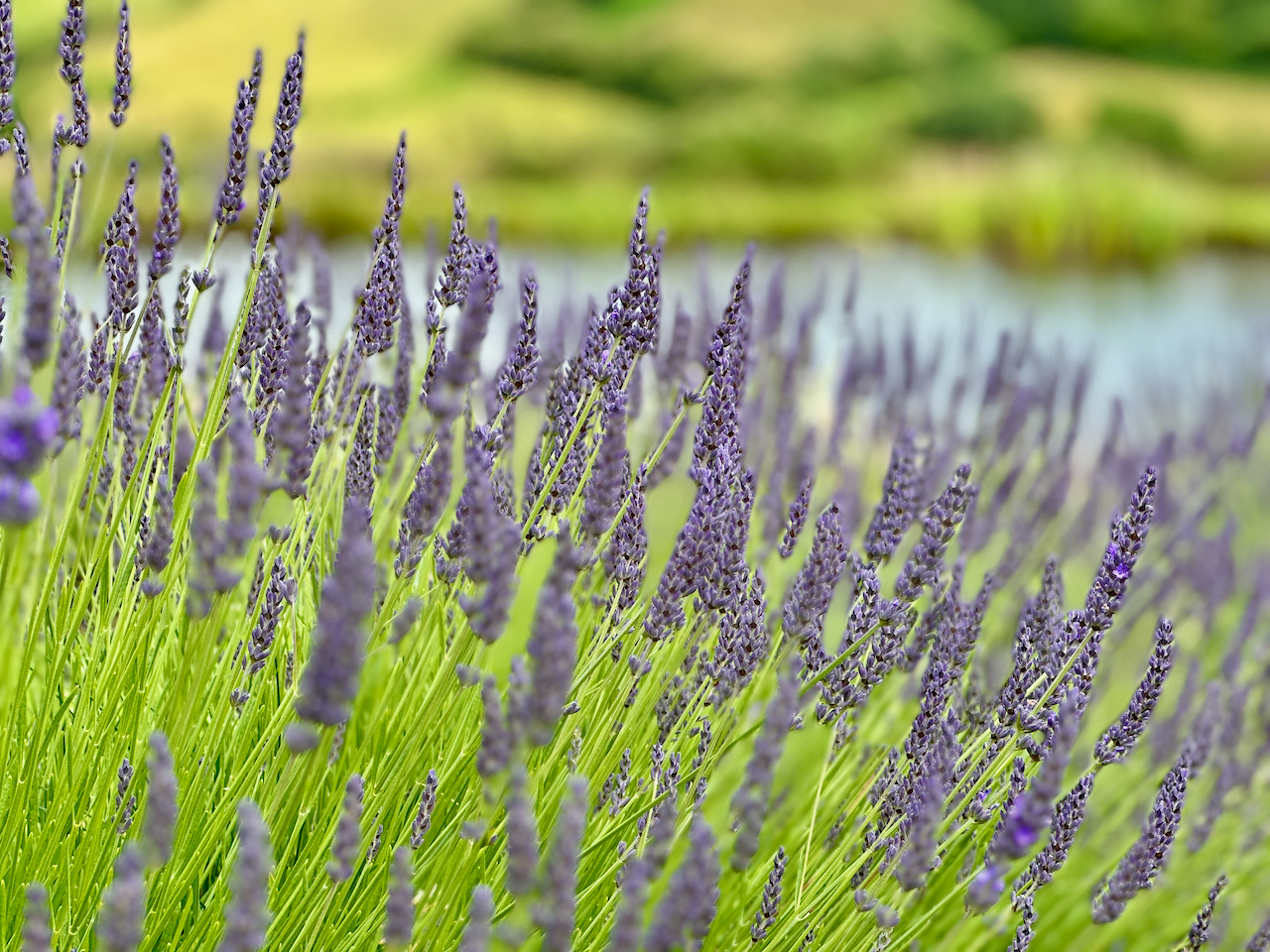
Lavender buds in full bloom at FARMERS’ Welsh Lavender Farm. Photo by Anietra Hamper
FARMERS’ Welsh Lavender obtained a grant in 2003 to plant a half acre of lavender which became the first such crops in Wales in a region mostly known for sheep farming. This diversification of farming was just the start of an important addition to the region’s ecosystem that does not have the typically dry habitat in which lavender thrives.
The farm evolved to the serene place it is today because sustainability and reusing old things for new purposes is a whole-farm philosophy. Lavender is tended to by hand, there’s no use of chemicals on the crops, recycled materials are used for packaging, and sections of the farm are dedicated to composting and natural meadows.
“Yes, it’s politically correct to do it, but it’s beautiful,” said Nancy Durham, owner of FARMERS’ Welsh Lavender farm. “My awakening is about everything around me. If you can use it again it’s probably more stylish and valuable than buying new.”
FARMERS’ Welsh Lavender continues to build on the idea of experimenting with innovative farming practices to see what is possible to support the 2.5 acres of lavender that they now cultivate, and to enrich the land in which it grows.
As consumers become more aware of the source of their food and the products they buy, so too are they becoming mindful of the source of flowers and crops like lavender and the farming practices used to produce it.
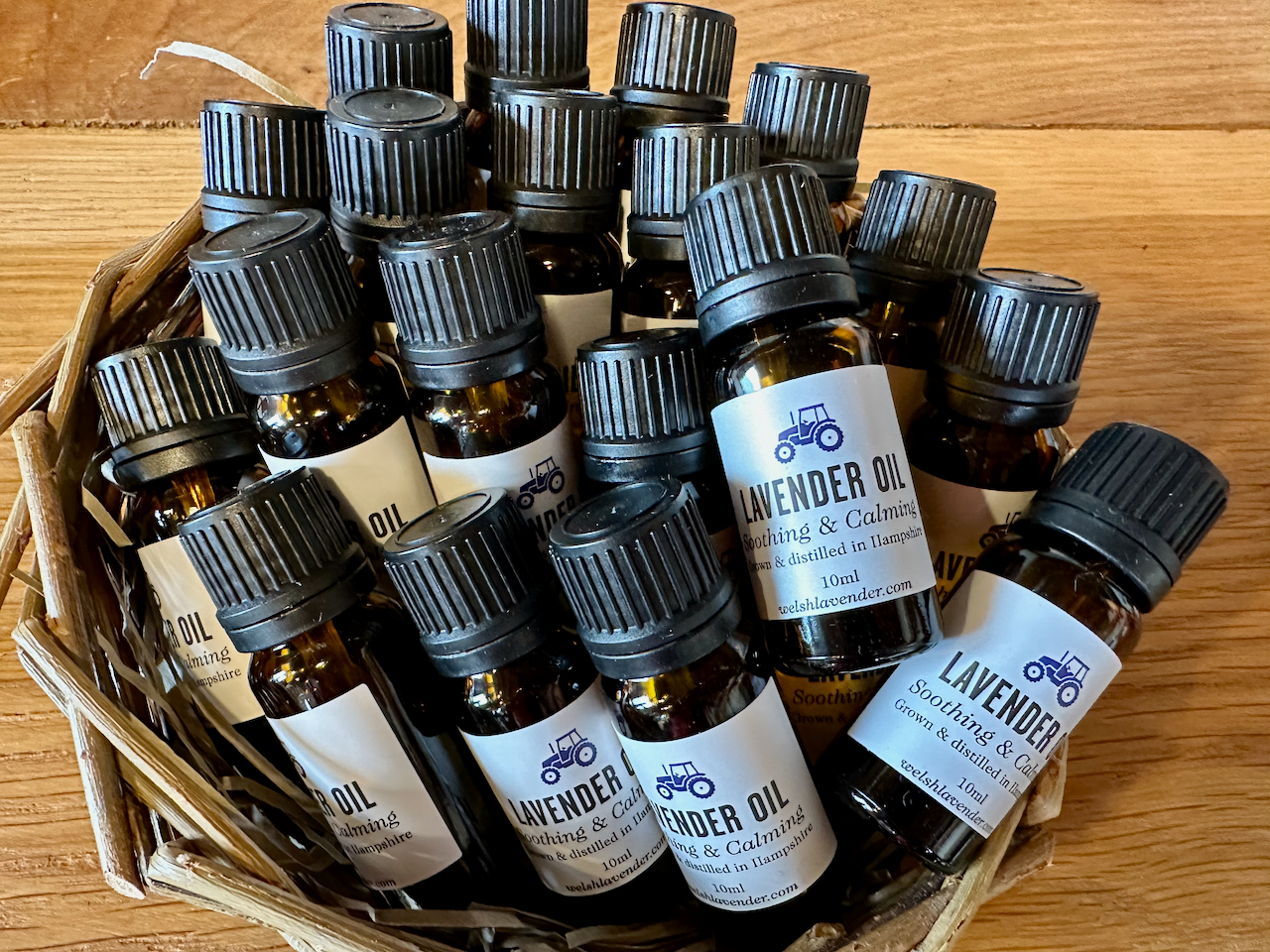
Essential Lavender Oil. Photo by Anietra Hamper
Lavender is big business
Lavender is grown worldwide in dozens of varieties. Though is it most popular for its relaxation properties, lavender has the added benefits of being anti-inflammatory, anti-bacterial and anti-microbial, making it useful for a wide range of products from oils and cosmetics to homeopathic remedies and natural cleaners for the home.
The key ingredient in all these products is the oil produced by the process of distilling the lavender buds, but it requires a lot of lavender for just a single drop of oil. On average it takes 10-pounds of lavender buds to produce 70-milliliters of oil that retails for about $75. That is why lavender is a base for other products that growers can sell year-round.
“It’s very precious as you make very little of it,” said Durham, who utilizes oil distilled on the farm to create products like hand creams, scrubs, body wash and 3-in-1 sprays that also use the lavender water byproduct from the distilling process.
The small amount of oil produced by lavender, its cost, and the vast number of products it is used for leaves the door open for imposters who are also trying to cash in on its popularity.
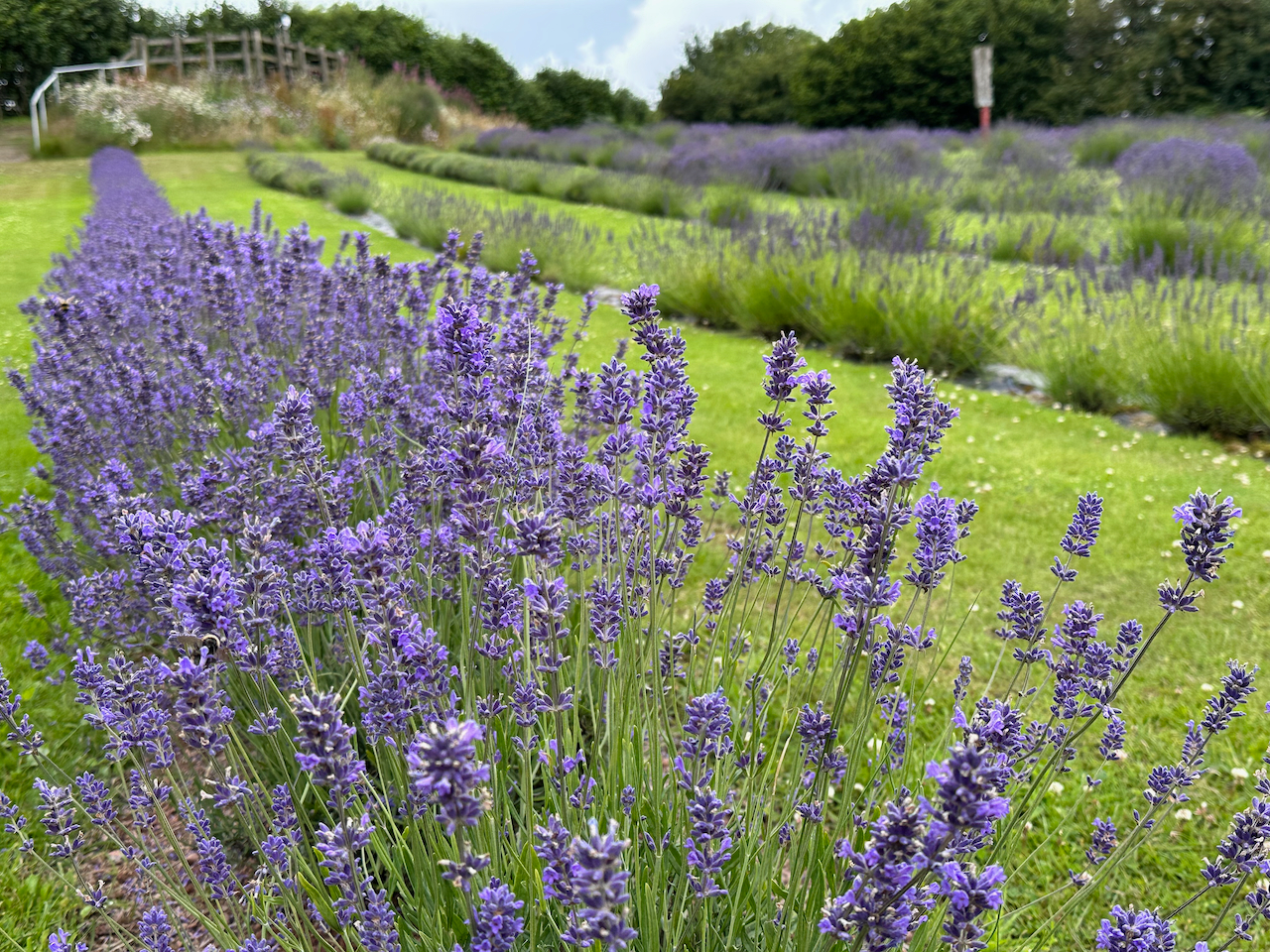
Lavender in bloom. Photo by Anietra Hamper
“They make synthetic replicas of lavender essential oil,” said Sherri Wood, president of the U.S. Lavender Growers Association. “I would ask consumers to be aware that there’s a cost for what is real lavender essential oil so if you find it at a great price it’s probably not 100% essential oil. It is probably adulterated or synthetic.”
Wood not only oversees the 600-member USLGA, but she operates her own six-acre lavender farm, Capay Valley Lavender, in northern California. Organizations like the USLGA provide a valuable network for lavender growers to exchange ideas, share new practices and communicate to consumers about the imposters and middlemen siphoning profits from farms by creating imposing products.
Regardless of a farm’s size there are no shortcuts when it comes to growing lavender. It is a level playing field when it comes to harvest to oil ratios and overall threats to crops like pests, weeds, soil conditions and the unpredictability of the impact of climate changes.
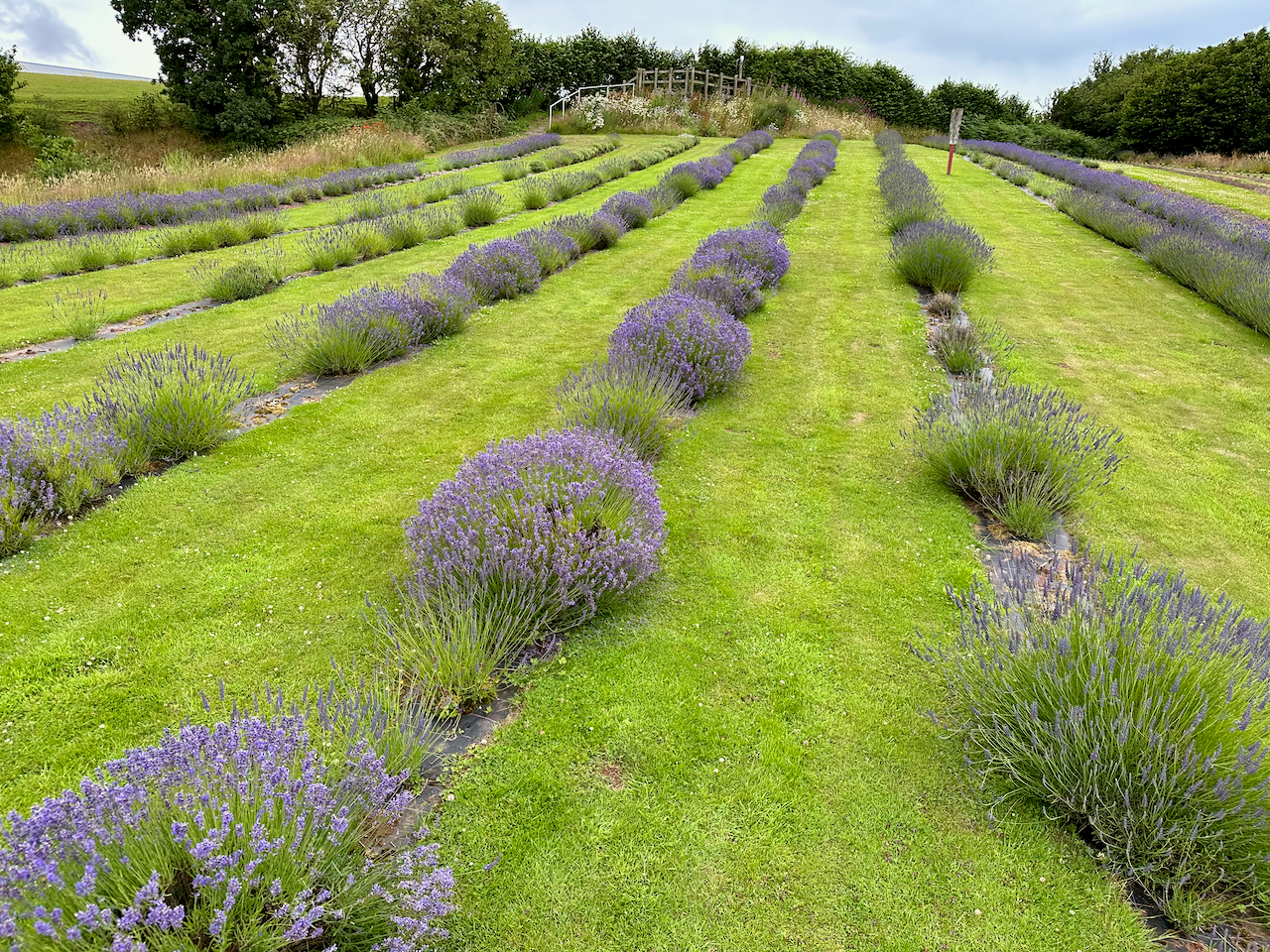
Lavender fields ready for harvest. Photo by Anietra Hamper
Regenerative farming: what’s changing and why
Unlike other types of farming, lavender farms require managing all steps of the process: planting, growing, harvesting, distilling, bottling, making it into product and retail sales.
Many small farms are already organic, but more of them are using regenerative farming practices because they grow fewer crops and must make the most of what they have.
“Organic means you’re not using pesticides and herbicides and when you use a fertilizer it should be a natural source,” said Wood. “A regenerative farmer is reusing things. When we harvest our lavender and distill it and have all this leftover cooked lavender, it goes out into the olive grove, and it becomes compound mulch. We’re reusing things.”
Smaller farms must also more closely manage lavender’s finicky nature when it comes to the soil that it needs to grow. Lavender needs sunlight and dry soil that will drain which is a challenge in regions like Wales that can see a lot of rain.

Newly prepared lavender rows using the strulch process on FARMERS’ Welsh Lavender Farm. Photo by Anietra Hamper
FARMERS’ Welsh Lavender experienced crop loss over time, but Durham saw this challenge as an opportunity to experiment with farming solutions once again. Through trial-and-error the farm implemented a new practice they call “strulch,” which is a combination of straw and mulch. Strulching helps keep the weeds down, but it also plays a critical role in soil drainage which is the most important element for lavender plants to survive.
“We’re moving entirely away from the way we were planting in 2003 to this new method. We’ve been doing it over the last few years introducing it slowly and we’re getting good results,” said Durham. “Our soil is very rich. Lavender wants dry, sandy soil so we are making trenches and putting in stones to make it a more sustainable crop by changing the way we plant.”
Though these new farming practices were experimental and based on need, they are innovative and what Durham calls “happy accidents” because they enable her to move the sustainability needle forward and introduce new concepts.
“It’s taken a long time to figure out how to make it grow in this soil. Solving the drainage problem has us on better footing,” said Durham.
The experimental farming practices at FARMERS’ Welsh Lavender have not gone unnoticed. The Black Mountains College in Wales, known for its horticulture education and study of soil ecology, uses the farm’s lavender fields and orchards to teach horticulture regeneration to students.
“Observation is one of the most important tools we have as growers —observing the environment to see what does well and learning when we can push the boundaries and when we can’t,” said Rashid Benoy, regenerative horticulture tutor for Black Mountains College.
The college is focused on innovative solutions to mitigate the impacts of climate change so studying the strulching drainage method on FARMERS’ Welsh Lavender farm provides insight into a larger agricultural shift into no-dig farming practices.
“The increase in the amount of carbon drawn into the soil and what we pull out of the atmosphere because of no-dig methods, if continued over time, is huge,” said Benoy. “There’s no way to get out of the climate change problems with technology, but we can do it through changing our agriculture methods.”
While small lavender farms that have fewer crops face a bigger impact from threats like weeds, climate changes and pests, they are important entities for experimenting with better farming practices that protect the crops, their business, and the environment.
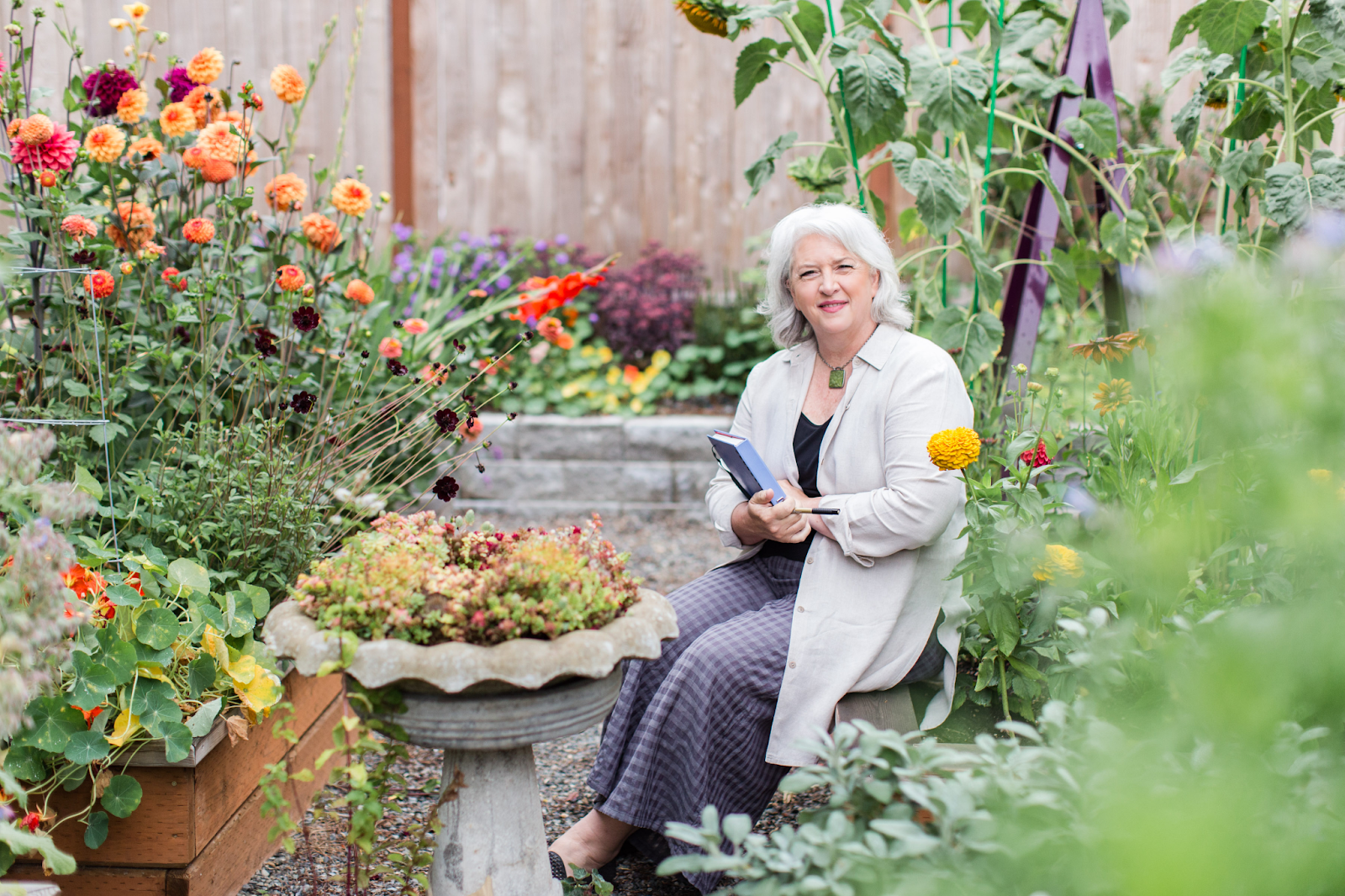
Debra Prinzing, advocate of the slow flower movement. Photo by Missy Palacol Photography
The slow flower movement
Though lavender does not have center stage in the slow flower movement, it is relevant to its pillar of connecting consumers to the source of the flowers they buy.
“Lavender checks all the boxes. It’s aesthetically beautiful. It’s a great floral design ingredient and it’s a specialty crop,” said Debra Prinzing, author, speaker, and podcast host on the slow flower movement.
The slow flower movement started as an effort in the United States to encourage consumers to ask for and expect transparency about the source of their flowers where about 80 percent of cut flowers sold in the U.S. are imported from countries like Colombia and Ecuador.This concept has spread worldwide as consumers make local sourcing a priority. Prinzing created a free online directory called SlowFlowers.com as a resource for consumers to find flower sources close to where they live. She also encourages consumers to visit local farms, like lavender farms, to indulge the senses in a unique experience that often changes their understanding of why buying directly from the farms is important.
Prinzing believes that the physical experience of seeing firsthand where the flowers are grown and the farming practices in place to grow them reinforces a shifting mindset about flower sourcing.
“It’s the romance of this aspirational life that we are two-three-and-four generations away from agriculture in terms of growing our own things. For example, people used to have herb gardens for medicinal treatments. With industrialization and the digital age, we are so far away from the land and flower farming ignites this yearning we have to connect with nature,” said Prinzing.
Many small lavender farms that produce products are stepping up when it comes to labeling to make it easier for consumers to recognize that they are supporting a local farm and making conscious decisions about the products they buy.
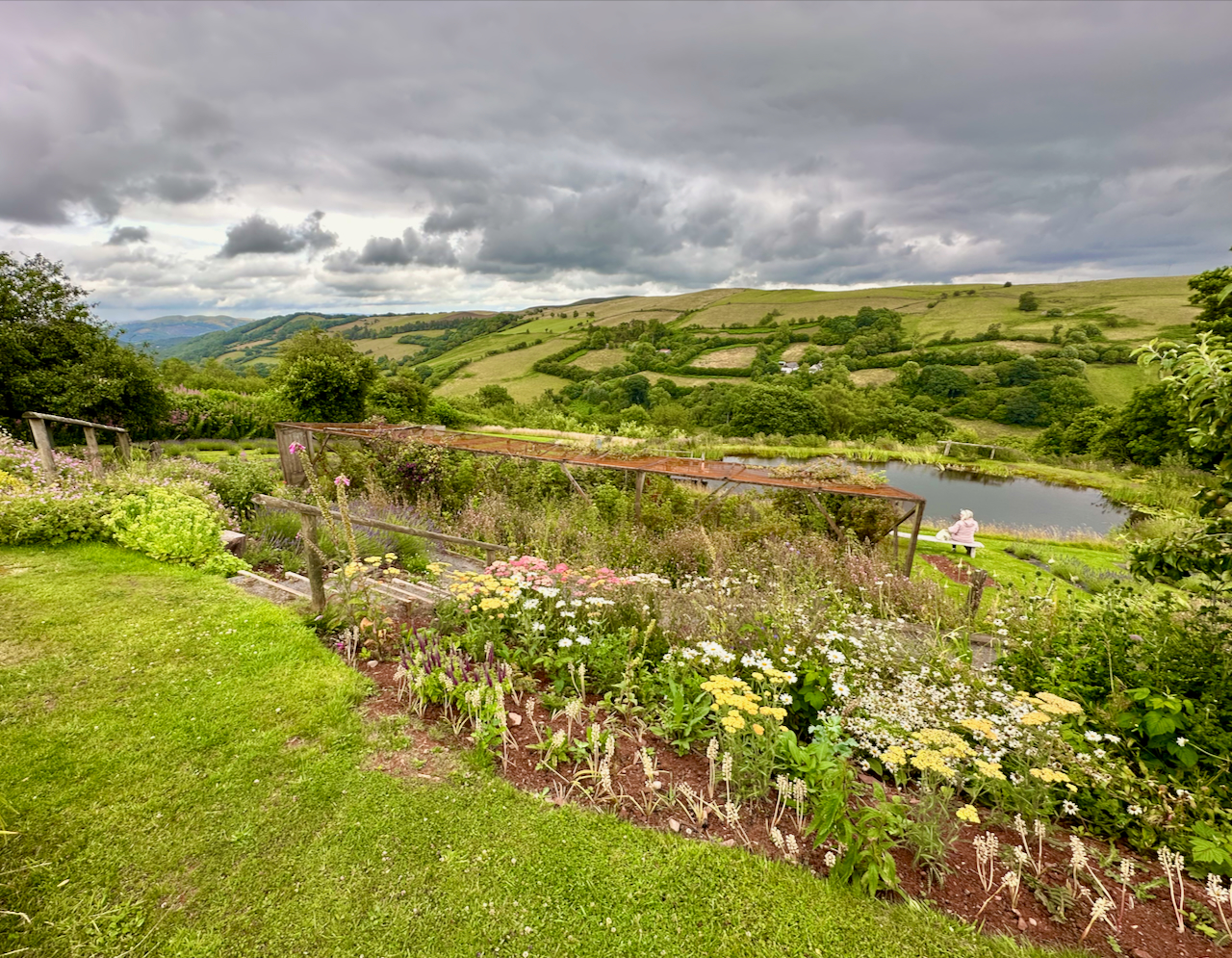
Visitors enjoying the FARMERS’ Welsh Lavender farm. Photo by Anietra Hamper
Closing the sustainability loop
As lavender farmers evolve their farming practices and the flower industry pushes for more transparency in sourcing through the buy-local concept, consumers are the last piece of the sustainability puzzle. Taking time to visit lavender farms and connect with the land is important. Farms recognize this and are putting into place experiences that visitors expect.
On the FARMERS’ Welsh Lavender farm, visitors can sit on a bench, feel the breeze on a swing and even channel their inner child on a seesaw, all of which overlooks the rolling hills across the Welsh landscape. The stillness on the farm only enhances the other senses that are fully immersed in the expected lavender fragrance coming from the fields and the visual palate of color from the wildflowers that seems like a painting that has come to life. The physical escape felt while wandering the farm mirrors in a physical sense what the scent of lavender does for the soul.
“It is a working farm. It is not commercial,” said Durham. “All around there’s places stop and perch around the farm. It’s a place where we welcome people to walk around, own it while they’re here and have a nice time from it all.”

Open space in the lavender field allows visitors full access. Photo by Anietra Hamper
The small, simple nature of the farm allows visitors to touch, smell, see and experience a world in bloom. This intimately connects them to lavender to gain a new respect for the plant with a reputation that far exceeds its delicate existence. Visitors begin to care about the process by seeing it firsthand with so much effort and yield required for just a single drop of essential oil.
“When I have visitors come out and you can just see their face and their body change, and they just walk out and go ‘oh my’ and they are walking and walking,” said Wood who sees many of the same visitors three and four times a season at her California lavender farm. “The fragrance fills the air. People come for picnics. It’s so relaxing to come out. Lavender has a draw, and it really engages people. Yes, I do it for economic reasons, but to know that people get pleasure from my farm - that fills one of my needs also.”
These visitor experiences and connecting so intimately to the lavender source helps consumers cherish this precious commodity and the farmers who produce it, one drop of oil at a time.
